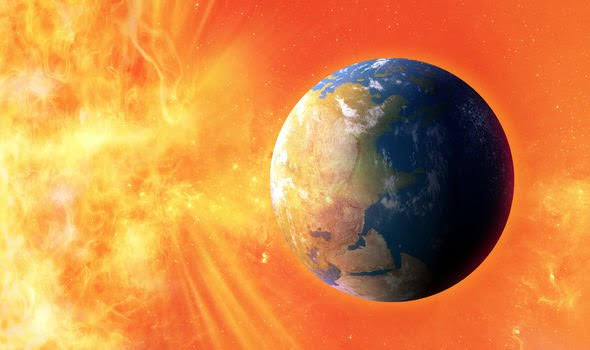The Land is becoming warmer globally, the last decade was on average, already one degree Celsius warmer than it was between 1850 and 1900, but it was way warmer over the land, and close to the 2 degrees in some regions.
More Moisture is evaporating faster, the Atmosphere is holding more water, while the Rainfall is getting heavier and more frequent.
The Droughts are intensifying, Extremely hot days are more intense, frequent, and lasting longer. Whereas extremely cold days are less frequent and less severe and Climate zones are shifting towards the poles.
According to the Sixth Assessment Report of climate change conducted by The Intergovernmental Panel on Climate Change (IPCC) which provides the physical science basis of climate change, and also providing the changes observed between 2011 and 2020 of 1 degree Celsius, which also uses simulation to project what the future would look like if the temperatures rose by 1.0, 1.5, 2 and 4 degrees Celsius relative to the 1850-1900 period.
Speaking at a press conference, the executive secretary of the United Nations Convention to Combat Desertification, Ibrahim Thiaw said, “Scientists are clear that we face dire consequences, if we fail to act now. Temperatures will rise above 2 degrees Celsius by 2050 and to between 3 and 4 degrees by 2100. They are also clear under what conditions, we can still reduce emissions drastically to keep the average global temperature below 2 degrees by 2050 and reduce it to below 1.5 before the turn of the century”.
Furthermore Thiaw said “It’s critical to cut the sources of emissions, such as fossil fuels right now. But it is vital to ensure that the Earth’s natural carbon sinks can draw down the carbon in the atmosphere now and into the future. Oceans and land are not sufficient to draw down all the emissions, but they are necessary and critically important for meeting the global goals envisioned. The stakes couldn’t be higher”.
The IPCC Report stated that oceans and land absorb half of our carbon emissions each year. But their effectiveness at slowing the accumulation of carbon dioxide in the atmosphere is declining with ever-increasing emissions.
Unless our course is changed now, over time, these natural carbon sinks will turn from net sinks into net sources of carbon emissions.
Under the Paris Agreement of 2015, governments agreed to take actions to ensure by year 2100 the Earth’s warming stays within 2 degrees Celsius, while pursuing efforts to limit the temperature increase to 1.5°C above pre-industrial levels.
These actions are known as Nationally Determined Contributions (NDCs) under the Agreement signed into law under the United Nation Framework Convention on Climate Change (UNFCCC).
Over one billion hectares of degraded land globally are earmarked for restoration by 2030. Of this, more than 250 million hectares are commitments under the NDCs. An additional 450 million hectares committed under the Convention to Combat Desertification and about 90 million hectares under the Convention on Biological Diversity can contribute to climate change mitigation and adaptation.
The Earth is warming fast, and even faster on the Land, better Land use, planning and management can actually be part of the solution.
Going forward, the restoration of the one billion hectares of land that the governments have committed to be restored by 2030 would make a big difference in our resilience to climate change.

